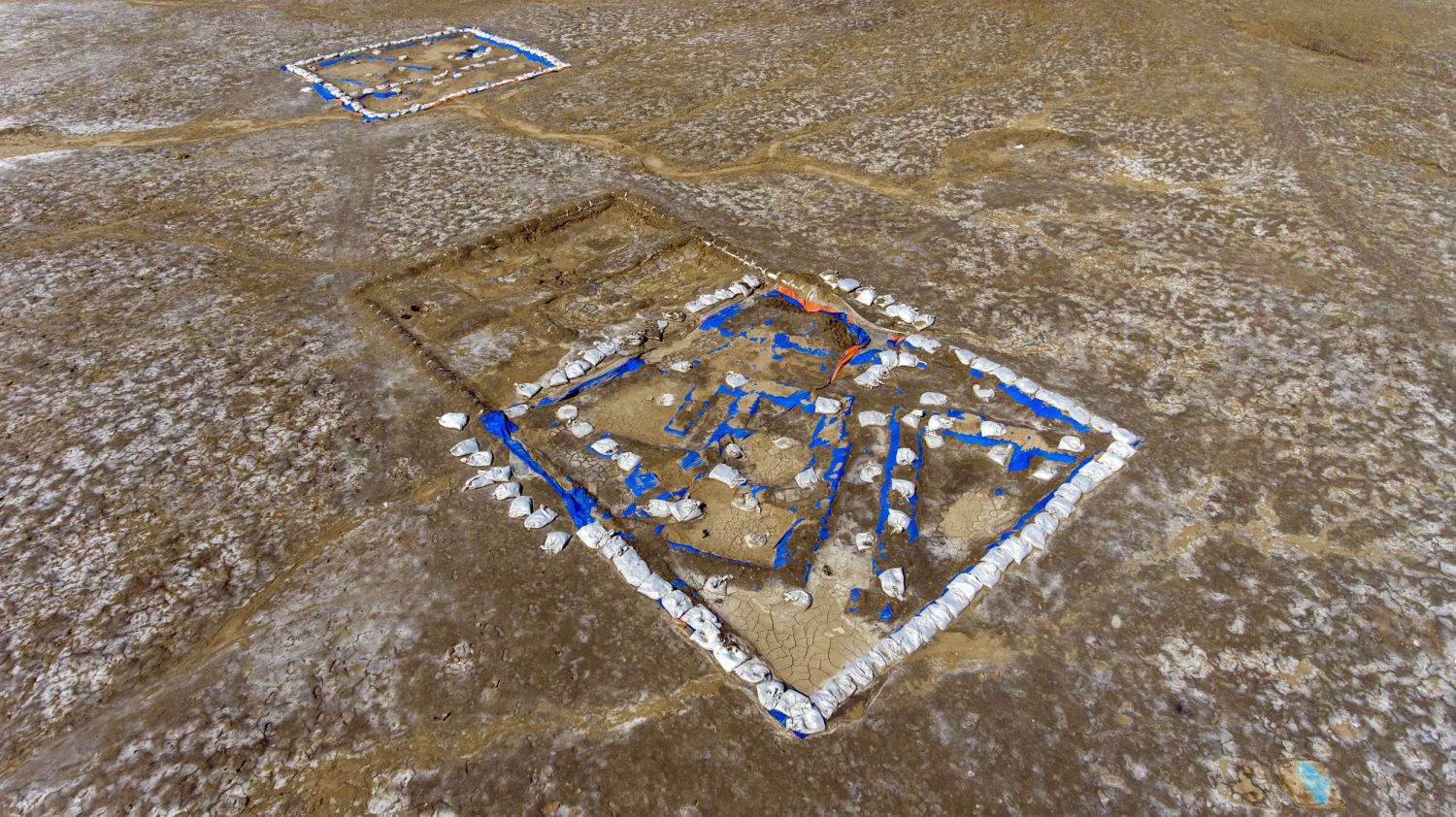[ad_1]

The digs at Lagash, which was first excavated in 1968, had shut down after 1990, and the site remained dormant until 2019.
Unlike many others, the site was not plundered in the interim, largely due to the efforts of tribes living in the area, said Zaid Alrawi, an Iraqi archeologist who is the project manager at the site.
Would-be looters who came to the area were run off by “local villagers who consider these sites basically their own property,” he said.
A temple complex and the remains of institutional buildings had been uncovered in earlier digs, so when archeologists returned in 2019, Alrawi said, they focused on areas that would give clues to the lives of ordinary people. They began with what turned out to be a pottery workshop containing several kilns, complete with throwaway figurines apparently made by bored workers and date pits from their on-shift snacking.
Further digging in the area surrounding the workshop found a large room containing a fireplace used for cooking. The area also held seating benches and a refrigeration system made with layers of clay jars thrust into the earth with clay shards in between.
The site is believed to date to around 2,700 BC. Given that beer drinking was widespread among the ancient Sumerians inhabiting Lagash at the time, many envisioned the space as a sort of ancient gastropub.
But Alrawi said he believes it was more likely a cafeteria to feed workers from the pottery workshop next door.
“I think it was a place to serve whoever was working at the big pottery production next door, right next to the place where people work hard, and they had to eat lunch,” he said.
Alrawi, whose father was also an archeologist, grew up visiting sites around the country. Today, he is happy to see “a full throttle of excavations” returning to Iraq.
“It’s very good for the country and for the archeologists, for the international universities and academia,” he said.
As archeological exploration has expanded, international dollars have flowed into restoring damaged heritage sites like the al-Nouri mosque in Mosul, and Iraqi authorities have pushed to repatriate stolen artifacts from countries as near as Lebanon and as far as the United States.
Last month, Iraq’s national museum began opening its doors to the public for free on Fridays — a first in recent history. Families wandered through halls lined with Assyrian tablets and got an up-close look at the crown jewel of Iraq’s repatriated artifacts: a small clay tablet dating back 3,500 years and bearing a portion of the Epic of Gilgamesh that was looted from an Iraqi museum 30 years ago and returned from the U.S. two years ago. The tablet is among 17,000 looted artifacts returned to Iraq from the U.S.
Ebtisam Khalaf, a history teacher who was one of the visitors to the museum on its first free day, said, “This is a beautiful initiative because, we can see the things that we only used to hear about.”
Before, she said, her students could “only see these antiquities in books. But now we can see these beautiful artifacts for real.”
 Latest Breaking News Online News Portal
Latest Breaking News Online News Portal




